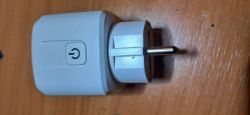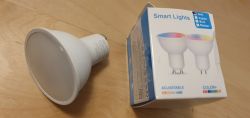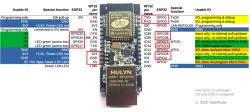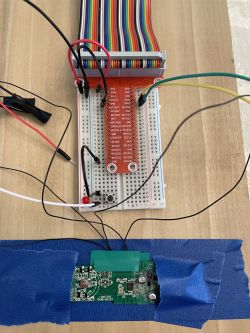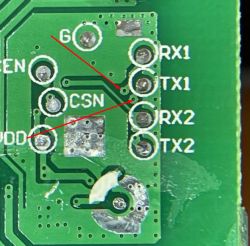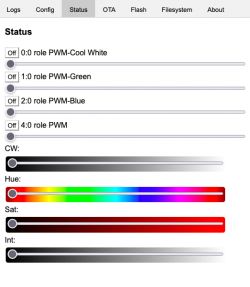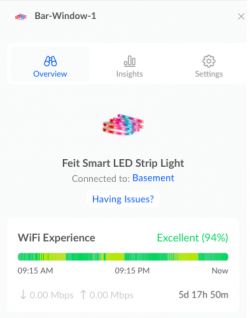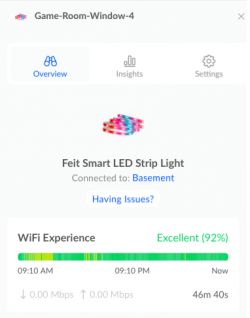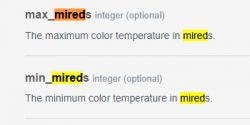This teardown is complete.
I got everything working now (except of course the BLE wireless remote):
It looks like we have to use the native interface instead of the web app for this device since it is RGBW (warm white.)
It appears that it needs flag 24 in order to work correctly.
(Note that the Web App will not show the correct information on the Status screen - but the native interface will.)
There is nothing on pin 24 - but if we don't set it to PWM3, then the HomeAssistant/MQTT definition breaks into 4 separate lights rather than a single RGBW light. (Might be a bug - Flag 24 should probably automatically fix this so we don't have to find an unused pin.) (This is fixed in latest FW update.)
The "smart" button is on pin 26.
The correct pins with flag 24 set are:
This device with 1.0.9 firmware is now listed on CloudCutter as:.
The CloudCutter profile can be found here: https://github.com/tuya-cloudcutter/tuya-clou...files/potek-lst-fw-1.0.9-sdk-2.3.1-40.00.json
I was able to flash it using only the RX1, TX1, GND and CEN test pads on the back of the board without having to desolder or cut any traces.
I was able to power the board with its included 24VDC power supply to talk to the 7231N.
I successfully completed a UART dump using a Raspberry Pi and the uartprogram from https://github.com/OpenBekenIOT/hid_download_py
The dump is zipped and attached to this post with a test SSID and Password on an otherwise freshly reset Tuya Firmware 1.0.9.
I have tested the CloudCutter profile and can confirm it works on an un-modified device.
As a note, this firmware significantly improves the WiFi performance of these light strips. This is consistent across all 5 of the devices I have updated so far - and the comparison is striking. The performance of the updated devices versus their historical performance and the current performance of the 4 remaining devices I have not yet flashed tells an interesting story. This is not anecdotal improvement - I have the historical performance data to prove it. (I have Unifi APs and a UDM Pro, which keeps device performance history.) The FEIT stock firmware is definitely nerfing the WiFi transmit strength. With the stock firmware, a device that's only 4 meters from a Unifi U6LR (Long Range model) shows fair performance, and a AP/Client Signal Balance of 'poor.' After flashing OpenBK, that same device now shows excellent performance and the AP/Client Signal Balance is 'good.' Here is a comparison of one Tuya Stock device and one OpenBK device - right next to each other:
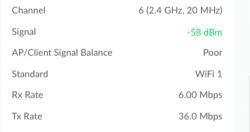
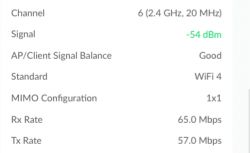
This is consistent across every one of these devices I have flashed. They have all switched to WiFi 4, good signal balance, and higher speed connection. (Note that I have only seen this improvement on this 7231N device. I also have some FEIT 7231T smart plugs and A19 bulbs that did not improve like this.)
Here is the full JSON configuration I am using:
Here are the photos for this device.

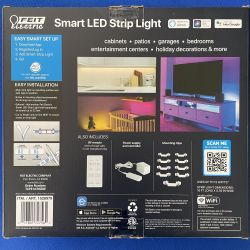
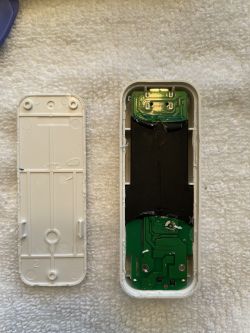
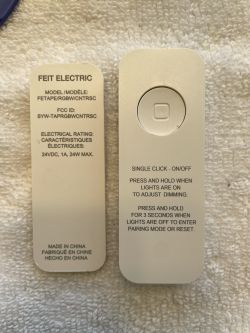
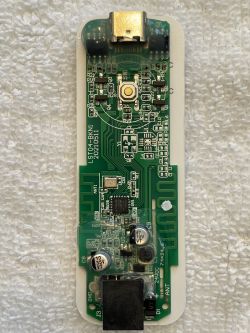
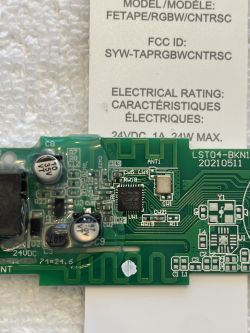
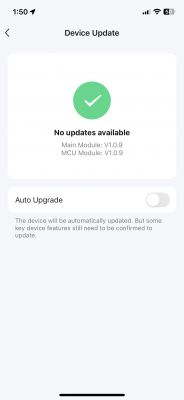
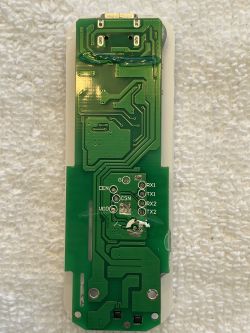
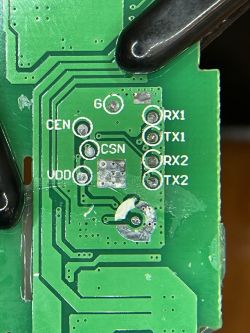
Here is a dump of the original 1.0.9 Tuya firmware after attaching to a test network:
I got everything working now (except of course the BLE wireless remote):
It appears that it needs flag 24 in order to work correctly.
The "smart" button is on pin 26.
The correct pins with flag 24 set are:
"pins": {
"6": "PWM;4",
"7": "PWM;2",
"8": "PWM;1",
"9": "PWM;0",
"26": "Btn_SmartLED;0"
}This device with 1.0.9 firmware is now listed on CloudCutter as:
Feit TAPE16-RGBW-RP LED StripThe CloudCutter profile can be found here: https://github.com/tuya-cloudcutter/tuya-clou...files/potek-lst-fw-1.0.9-sdk-2.3.1-40.00.json
I was able to flash it using only the RX1, TX1, GND and CEN test pads on the back of the board without having to desolder or cut any traces.
I was able to power the board with its included 24VDC power supply to talk to the 7231N.
I successfully completed a UART dump using a Raspberry Pi and the uartprogram from https://github.com/OpenBekenIOT/hid_download_py
The dump is zipped and attached to this post with a test SSID and Password on an otherwise freshly reset Tuya Firmware 1.0.9.
I have tested the CloudCutter profile and can confirm it works on an un-modified device.
As a note, this firmware significantly improves the WiFi performance of these light strips. This is consistent across all 5 of the devices I have updated so far - and the comparison is striking. The performance of the updated devices versus their historical performance and the current performance of the 4 remaining devices I have not yet flashed tells an interesting story. This is not anecdotal improvement - I have the historical performance data to prove it. (I have Unifi APs and a UDM Pro, which keeps device performance history.) The FEIT stock firmware is definitely nerfing the WiFi transmit strength. With the stock firmware, a device that's only 4 meters from a Unifi U6LR (Long Range model) shows fair performance, and a AP/Client Signal Balance of 'poor.' After flashing OpenBK, that same device now shows excellent performance and the AP/Client Signal Balance is 'good.' Here is a comparison of one Tuya Stock device and one OpenBK device - right next to each other:


This is consistent across every one of these devices I have flashed. They have all switched to WiFi 4, good signal balance, and higher speed connection. (Note that I have only seen this improvement on this 7231N device. I also have some FEIT 7231T smart plugs and A19 bulbs that did not improve like this.)
Here is the full JSON configuration I am using:
{
"vendor": “FEIT”,
"bDetailed": "0",
"name": “Smart “LED Light Strip”,
"model": “FETAPE/RGBW/CNTRSC”,
"chip": "BK7231N",
"board": “LST04-BKN1”,
"keywords": [
"RGBW",
"Strip",
"Cloudcutter"
],
"pins": {
"6": "PWM;4",
"7": "PWM;2",
"8": "PWM;1",
"9": "PWM;0",
"26": "Btn_SmartLED;0"
},
"image": "https://obrazki.elektroda.pl/7879920800_1678042069.jpg",
"wiki": "https://www.elektroda.com/rtvforum/viewtopic.php?p=20474832#20474832"
}Here are the photos for this device.









Here is a dump of the original 1.0.9 Tuya firmware after attaching to a test network:
Cool? Ranking DIY



